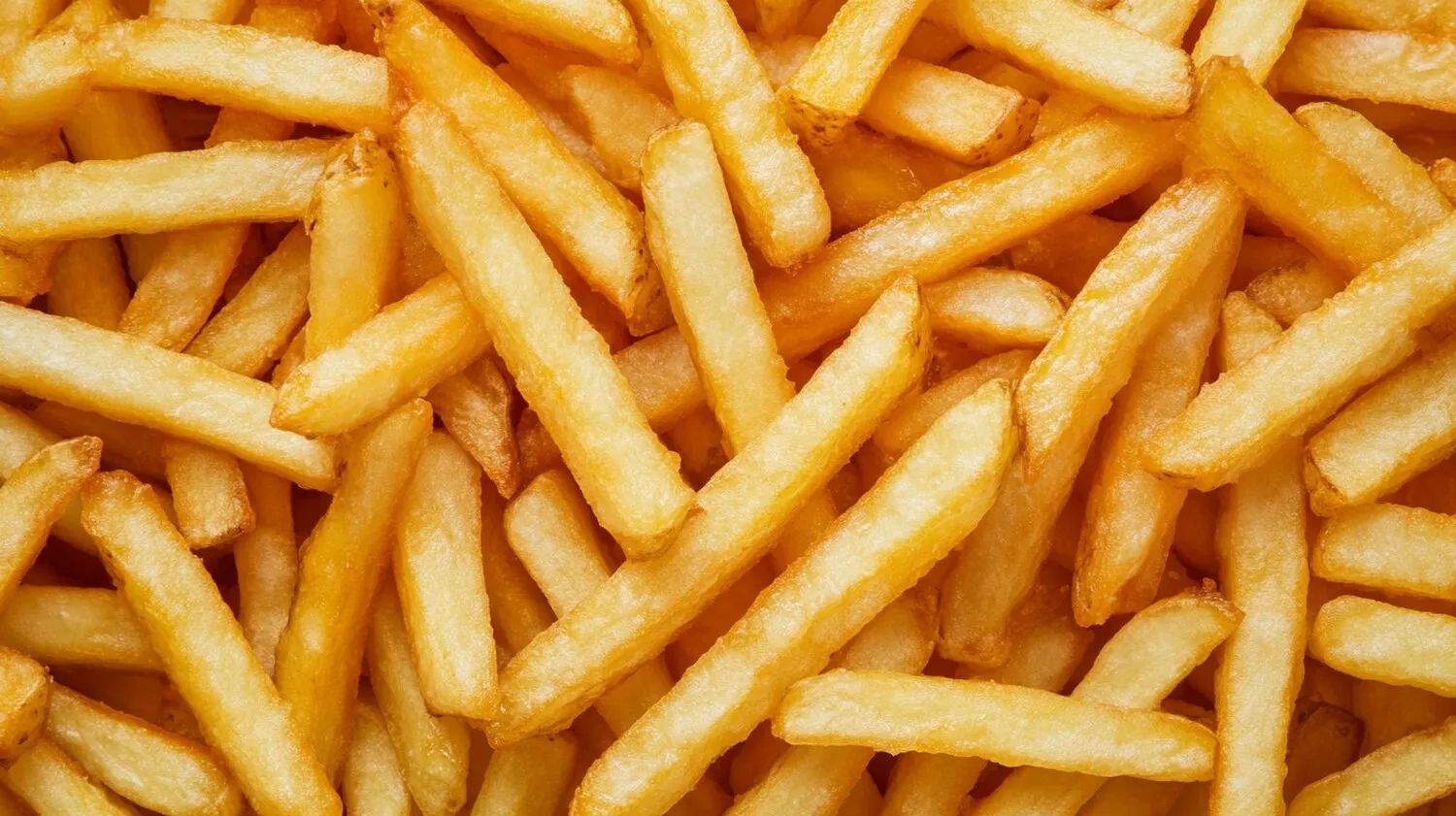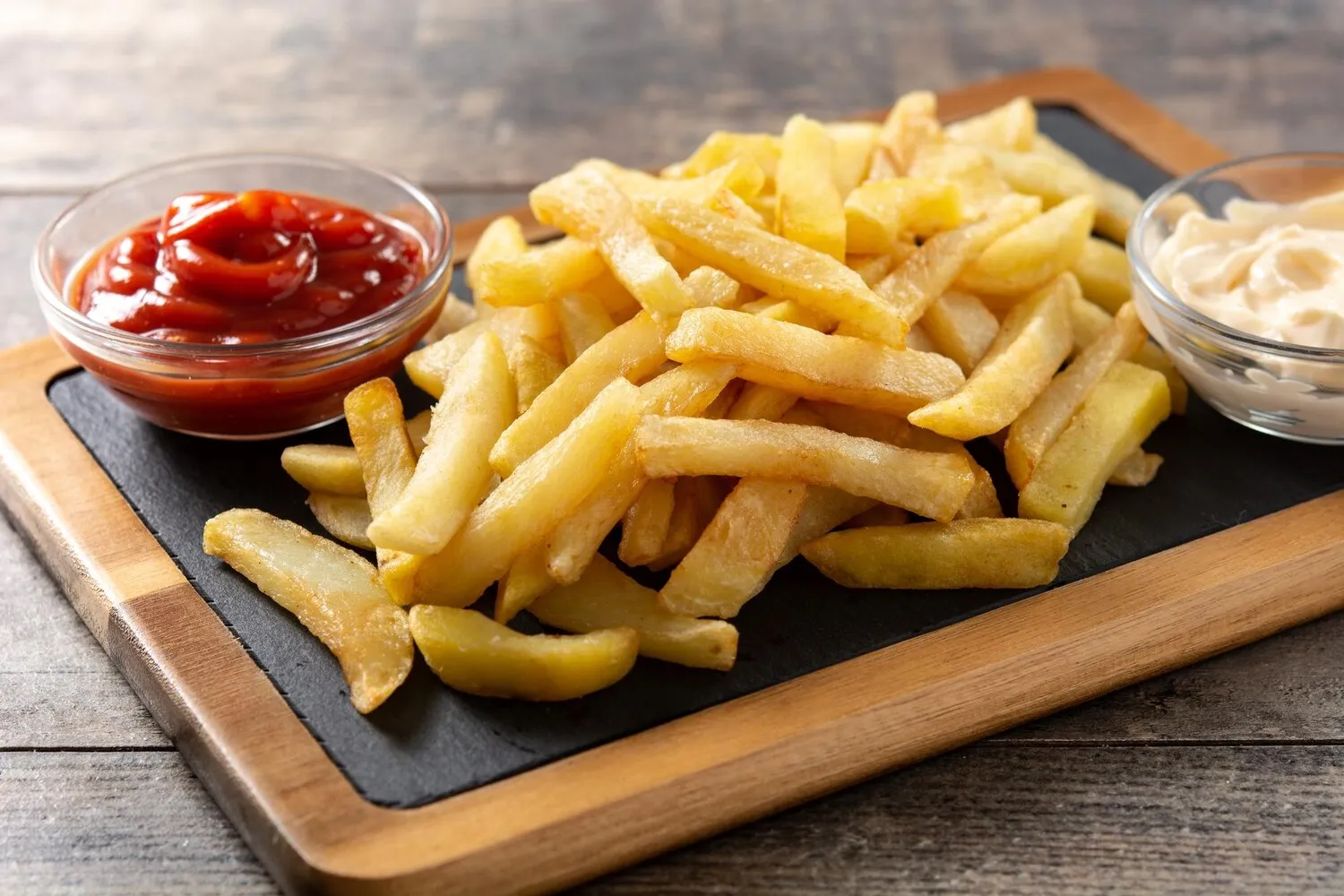
Les Fernandines
Homemade fries
Nutrition Facts
* The % Daily Value (DV) tells you how much a nutrient in a serving of food contributes to a daily diet. 2,000 calories a day is used for general nutrition advice.
Fries, although often associated with France, are widely believed to have originated in Belgium. The story goes that during a particularly harsh winter in the Meuse valley, the river froze, preventing locals from catching fish, their usual staple. They turned to potatoes, slicing and frying them in a similar fashion to the small fried fish they were accustomed to.
In Belgium, fries are more than just a side dish; they're a national icon. They are typically enjoyed as street food, served in a paper cone ('cornet') with a variety of sauces, and are a central part of Belgian cuisine.
Friteries
Belgium boasts numerous 'friteries' (fry shops), often family-run establishments, where fries are the star. These friteries are a social hub, offering a wide array of sauces to accompany the fries.
Sauces
The choice of sauce is a crucial aspect of the Belgian fry experience. Popular options include mayonnaise, ketchup, andalouse (a mayonnaise-based sauce with tomato paste and peppers), samurai (a spicy mayonnaise), and many more.
Double Frying
The Belgian method of double frying is considered key to achieving the perfect texture: crispy on the outside and fluffy on the inside.
The primary flavor profile of Les Fernandines revolves around the natural, earthy taste of potatoes, enhanced by the frying process. The choice of oil and the cooking temperature significantly impact the final flavor and texture.
The core flavor is potato-centric, with a slightly sweet, starchy undertone. Frying in beef fat or a blend of vegetable oils imparts a savory richness. Salt is essential for enhancing the natural flavors. The exterior should be crispy and slightly browned, offering a contrast to the soft, fluffy interior. High-quality potatoes, like Bintje or Russet, contribute to the best flavor. The type of oil used in frying further adds subtle nuanced flavors; beef fat will give a richer, savory flavor while peanut oil will contribute a nutty flavor.
Potato Selection
Choose starchy potatoes like Bintje (preferred in Belgium, but harder to find elsewhere), Russet, or Maris Piper. These potatoes have a high starch content, which results in a fluffy interior.
Soaking the Potatoes
Soak the cut potatoes in cold water for at least 30 minutes (or even up to a few hours) before frying. This removes excess starch and prevents the fries from sticking together during frying.
Double Frying Technique
The double-frying technique is essential. First, fry the potatoes at a lower temperature (around 160°C or 320°F) until cooked through but not browned. Then, let them cool slightly before frying them again at a higher temperature (around 190°C or 375°F) until golden brown and crispy.
Oil Temperature Control
Maintaining the correct oil temperature is crucial. Use a deep-fry thermometer to monitor the temperature accurately. If the oil is too cold, the fries will be greasy. If it's too hot, they will burn on the outside before being cooked through.
Salting
Salt the fries immediately after the second frying while they are still hot. This helps the salt adhere to the fries and enhances their flavor.
Explore additional Side Dish dishes and restaurants
Explore Side DishDiscover top dining spots and culinary experiences in Montpellier.
Explore MontpellierLearn more about the food culture, restaurant scene, and culinary heritage of France.
Explore France
